In recent years, artificial grass has taken the landscaping world by storm. Homeowners, businesses, and even professional sports arenas are turning to this synthetic alternative to natural grass for a lush, green landscape that requires minimal maintenance. In this comprehensive article, we will delve into the world of artificial grass, exploring its benefits, applications, and how it’s changing the way we view outdoor spaces.
Introduction
Artificial grass, often referred to as synthetic turf or fake grass, is a revolutionary landscaping solution that mimics the look and feel of real grass. Unlike its natural counterpart, artificial grass requires minimal upkeep, making it an increasingly popular choice for both residential and commercial landscapes.
The Evolution of Artificial Grass
Artificial grass has come a long way since its inception. Initially developed for sports fields in the mid-20th century, it has undergone significant advancements in terms of technology, durability, and aesthetics. Today, it is virtually indistinguishable from natural grass, thanks to innovations in materials and manufacturing techniques.

Why Choose Artificial Grass?
Environmental Benefits
One of the primary reasons to consider artificial grass is its positive impact on the environment. Unlike natural grass, it doesn’t require excessive watering, reducing water consumption significantly. In regions facing water shortages, artificial grass is a sustainable choice.
Cost-Efficiency
While the initial investment in artificial grass may seem higher than natural grass, it offers substantial long-term savings. You eliminate the need for constant watering, mowing, and fertilizing, reducing your monthly maintenance costs.
Low Maintenance
Artificial grass is virtually maintenance-free. Say goodbye to hours spent mowing and weeding your lawn. It stays green and vibrant year-round, without the need for pesticides or herbicides.
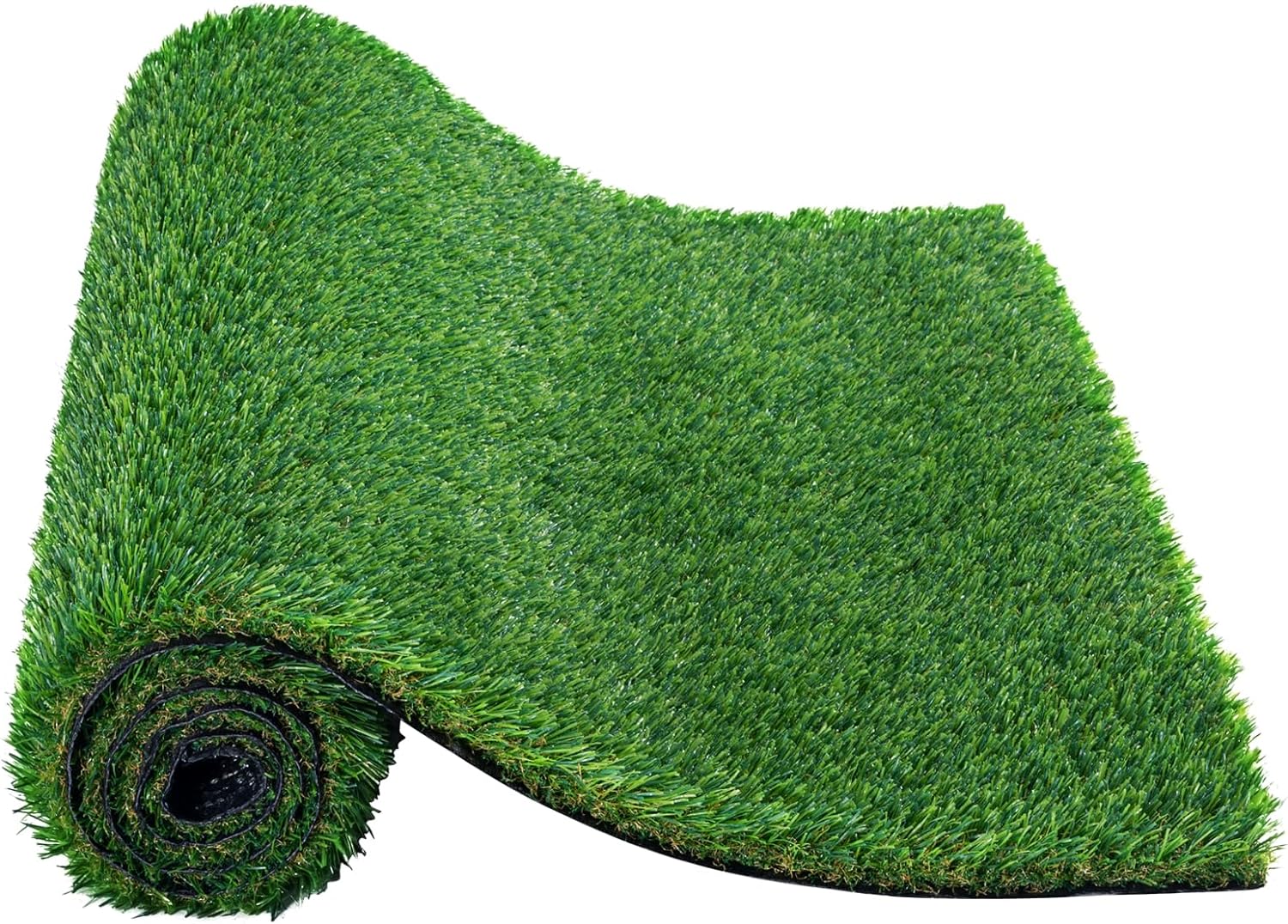
Applications of Artificial Grass
Residential Landscaping
Artificial grass has become a staple in residential landscaping projects. Homeowners appreciate its lush appearance and the fact that it remains pristine without the need for constant care. It’s an excellent choice for front yards, backyards, and even rooftop gardens.
Commercial Landscaping
Businesses are also embracing the benefits of artificial grass. Office complexes, shopping centers, and hotels are using it to create inviting outdoor spaces that leave a lasting impression on visitors.
Sports Fields
Artificial grass has revolutionized the world of sports. Professional athletes and recreational players alike enjoy the consistent playing surface it offers. It can withstand heavy use and harsh weather conditions, making it ideal for sports fields of all kinds.
Types of Artificial Grass
Artificial grass comes in various materials, each with its own set of characteristics. The most common types include polyethylene, polypropylene, and nylon. Understanding these materials can help you choose the right one for your specific needs.
Installation Process
The installation of artificial grass involves several key steps:
Site Preparation
Before laying down artificial grass, proper site preparation is essential. This includes removing existing vegetation, grading the area, and ensuring proper drainage.
Base Installation
A sturdy base is crucial for the longevity of artificial grass. Typically, a layer of crushed stone or gravel is compacted and leveled to create a stable foundation.
Grass Installation
The artificial grass is meticulously installed on top of the base. Proper stretching and seaming techniques are employed to ensure a seamless appearance.
Maintenance Tips
To keep your artificial grass looking its best, follow these maintenance tips:
Cleaning
Regularly remove debris, leaves, and dirt from the surface using a leaf blower or broom.
Brushing
Occasionally brush the grass fibers to maintain their upright position and ensure an even appearance.
Repairing
Address any damage promptly by patching or replacing damaged sections of artificial grass.
Artificial Grass vs. Natural Grass
Let’s compare artificial grass and natural grass in various aspects:
Water Consumption
Artificial grass requires no watering, while natural grass can be a water-intensive choice, especially in arid regions.
Maintenance
Natural grass demands regular mowing, weeding, and fertilizing, whereas artificial grass is virtually maintenance-free.
Aesthetic Appeal
Artificial grass maintains its lush green appearance year-round, while natural grass can turn brown and require extensive care during dry spells.
Environmental Impact
The adoption of artificial grass can have a positive environmental impact:
Water Conservation
By reducing water consumption, artificial grass contributes to water conservation efforts.
Chemical Usage
Eliminating the need for pesticides and herbicides reduces the introduction of harmful chemicals into the environment.
Reduction in CO2 Emissions
Less lawn maintenance equipment and reduced water usage result in fewer carbon emissions.
Artificial Grass for Pet Owners
Pet owners can benefit from artificial grass in several ways:
Pet-Friendly Features
Artificial grass is easy to clean and resistant to pet-related wear and tear.
Cleaning and Odor Control
Pet odors can be effectively managed with proper cleaning and the use of specialized infills.
Cost Considerations
When considering artificial grass, factor in the following cost considerations:
Upfront Costs
While the initial investment can be higher than natural grass, the long-term savings make it a cost-effective choice.
Long-Term Savings
Reduced water bills, no need for lawn care equipment, and lower maintenance costs lead to substantial long-term savings.
Choosing the Right Artificial Grass
Selecting the perfect artificial grass for your needs involves considering factors like quality, durability, color, and texture. Consult with professionals to make an informed choice.
Professional Installation vs. DIY
Deciding between professional installation and a DIY approach depends on various factors:
Pros and Cons
Evaluate the advantages and disadvantages of both options to determine which suits your situation best.
Hiring a Certified Installer
If you choose professional installation, look for certified installers with experience in artificial grass installation.
Artificial Grass Maintenance Kits
To simplify maintenance, consider investing in artificial grass maintenance kits. These kits typically include essential tools and products for keeping your grass in top condition.
Artificial Grass for Dogs:
Many dog owners understand the challenges of maintaining a lush, green lawn while keeping their furry friends happy and comfortable. Traditional grass can struggle to withstand the wear and tear caused by dogs, leading to muddy paws, bald patches, and a never-ending battle against brown spots. This is where artificial grass for dogs comes to the rescue. In this comprehensive guide, we will explore the benefits, installation process, and maintenance of artificial grass for dogs, ensuring both your lawn and your canine companion thrive.
The Benefits of Artificial Grass for Dogs
Durability and Resilience
Artificial grass is engineered to withstand heavy foot traffic and the playful antics of your dogs. It won’t wear down, tear, or form unsightly patches, ensuring your lawn remains pristine.
Clean and Mud-Free
Say goodbye to muddy paws! Artificial grass for dogs stays clean and dry even after rain, providing your pets with a mess-free environment.
Allergen-Free Environment
Unlike natural grass, artificial grass doesn’t produce allergens like pollen. This can be a game-changer for dogs with allergies or sensitivities.
Low Maintenance
No more mowing, fertilizing, or watering. Artificial grass requires minimal upkeep, saving you time and money in the long run.
Aesthetically Pleasing
Your yard will always look green and inviting, enhancing your outdoor space’s beauty and appeal.
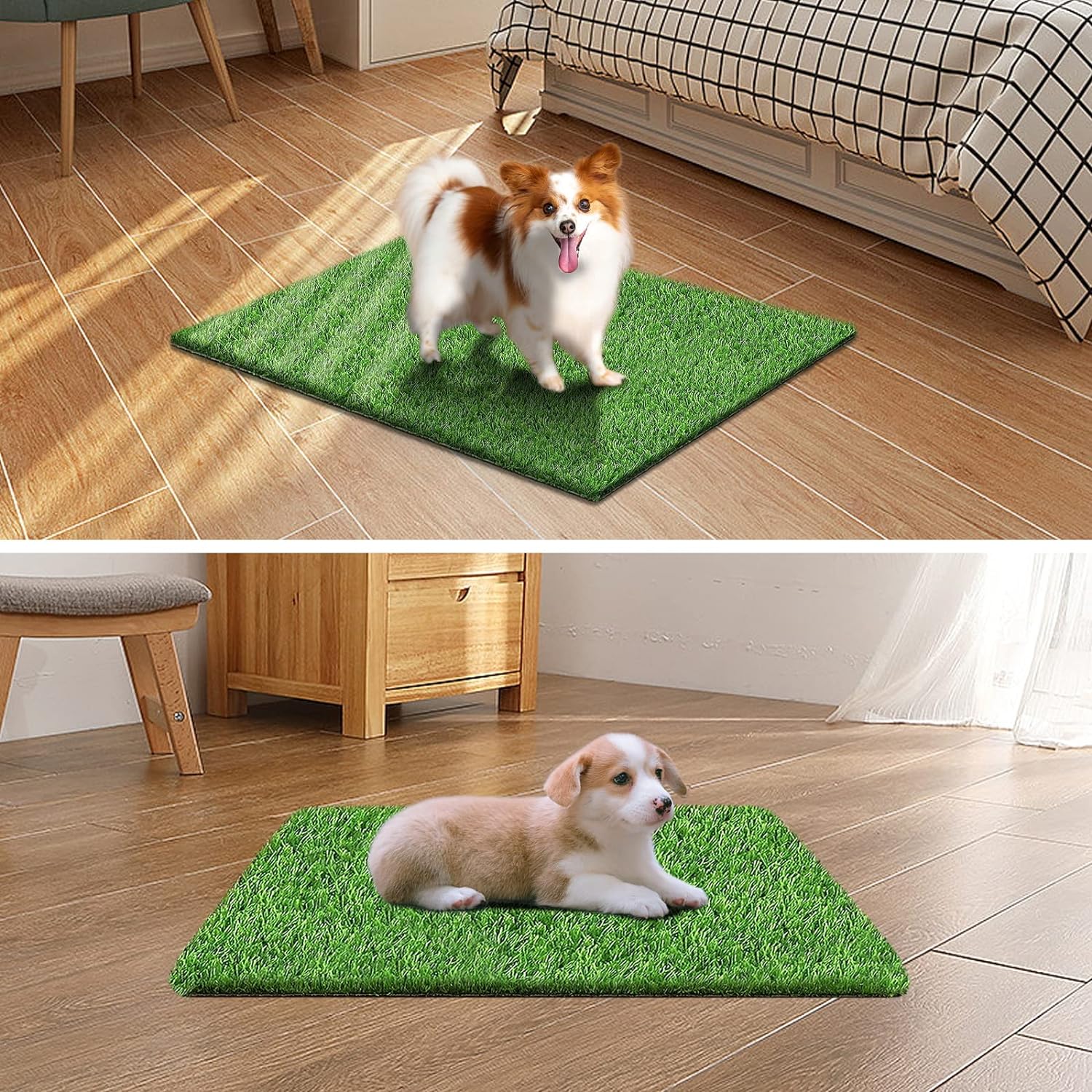
2. Installation: Creating a Dog-Friendly Paradise
Preparing the Surface
Proper groundwork is crucial. Remove existing grass, level the soil, and add a weed barrier to ensure a smooth base.
Choosing the Right Artificial Grass
Select high-quality artificial grass designed for dogs. It should be non-toxic, lead-free, and durable.
Professional vs. DIY Installation
While DIY is an option, professional installation ensures a flawless finish and proper drainage.
Safety Considerations
Ensure the installation is safe for your dog by addressing any potential hazards in your yard.
3. Maintaining Your Artificial Grass
Regular Cleaning
Frequent rinsing and brushing will keep your artificial grass clean and debris-free.
Preventing Odors
Use pet-friendly enzymatic cleaners to eliminate odors from pet urine.
Dealing with Pet Waste
Promptly scoop and dispose of pet waste to maintain a sanitary environment.
Brushing and Fluffing
Periodically brush the grass blades to keep them upright and looking their best.
Repairing Damage
Patch any damage promptly to prevent it from spreading.

- Are artificial grass seams visible?
- The visibility of seams in artificial grass depends on the quality of installation. If installed properly, seams should be minimal and not very noticeable. Professional installers use specialized adhesives and techniques to join the pieces of artificial grass, making the seams less visible. However, it’s essential to choose a reputable installer who has experience in installing artificial grass to ensure a seamless and natural look.
- Are artificial grass good for dogs?
- Artificial grass can be a great option for dog owners for several reasons:
- Easy to clean: It’s much easier to clean up after pets on artificial grass than on natural grass. Pet waste can be quickly removed, and the grass can be hosed down and disinfected.
- No muddy paws: Dogs won’t track mud and dirt into the house, which is a common problem with natural grass.
- Durability: Artificial grass is resistant to digging and wear and tear caused by pets.
- Allergies: It can be a better option for dogs with grass allergies.
- Year-round use: Unlike natural grass, artificial grass stays green and usable throughout the year.
- Artificial grass can be a great option for dog owners for several reasons:
- Is artificial grass too hot for dogs?
- Artificial grass can become hot in direct sunlight, just like any other surface. However, it’s not inherently hotter than natural grass or pavement. To mitigate heat concerns, you can:
- Choose lighter-colored artificial grass, as it absorbs less heat.
- Install shade structures or trees in your yard to provide relief from the sun.
- Water the artificial grass occasionally to cool it down.
- Artificial grass can become hot in direct sunlight, just like any other surface. However, it’s not inherently hotter than natural grass or pavement. To mitigate heat concerns, you can:
- Is artificial grass toxic?
- High-quality artificial grass is generally safe and non-toxic. Reputable manufacturers produce artificial grass that complies with safety standards. However, some older or low-quality products may contain potentially harmful substances. It’s essential to do your research and choose artificial grass from trusted suppliers that provide safety assurances.
- Is artificial grass bad for the environment?
- Artificial grass does have some environmental considerations:
- Resource use: The production of artificial grass involves the use of petroleum-based materials and energy. However, when compared to the water, pesticides, and fertilizers required for natural grass, the environmental impact may be lower in regions with water scarcity.
- Disposal: At the end of its life cycle, disposing of artificial grass can be a challenge. Some older products may not be recyclable. It’s important to check with local recycling facilities or consider eco-friendly disposal options.
- Heat island effect: Artificial grass can contribute to the urban heat island effect because it absorbs and retains heat. Choosing lighter-colored grass or adding shade can help mitigate this.
- Artificial grass does have some environmental considerations:
- Is artificial grass expensive?
- The cost of artificial grass installation varies depending on factors like the quality of the grass, the size of the area, and the complexity of the installation. Generally, artificial grass can be more expensive upfront compared to natural grass. However, it often pays off in the long run due to lower maintenance costs (no need for watering, mowing, or fertilizing) and durability. The initial investment can vary, so it’s advisable to get quotes from several installers and consider the long-term savings.
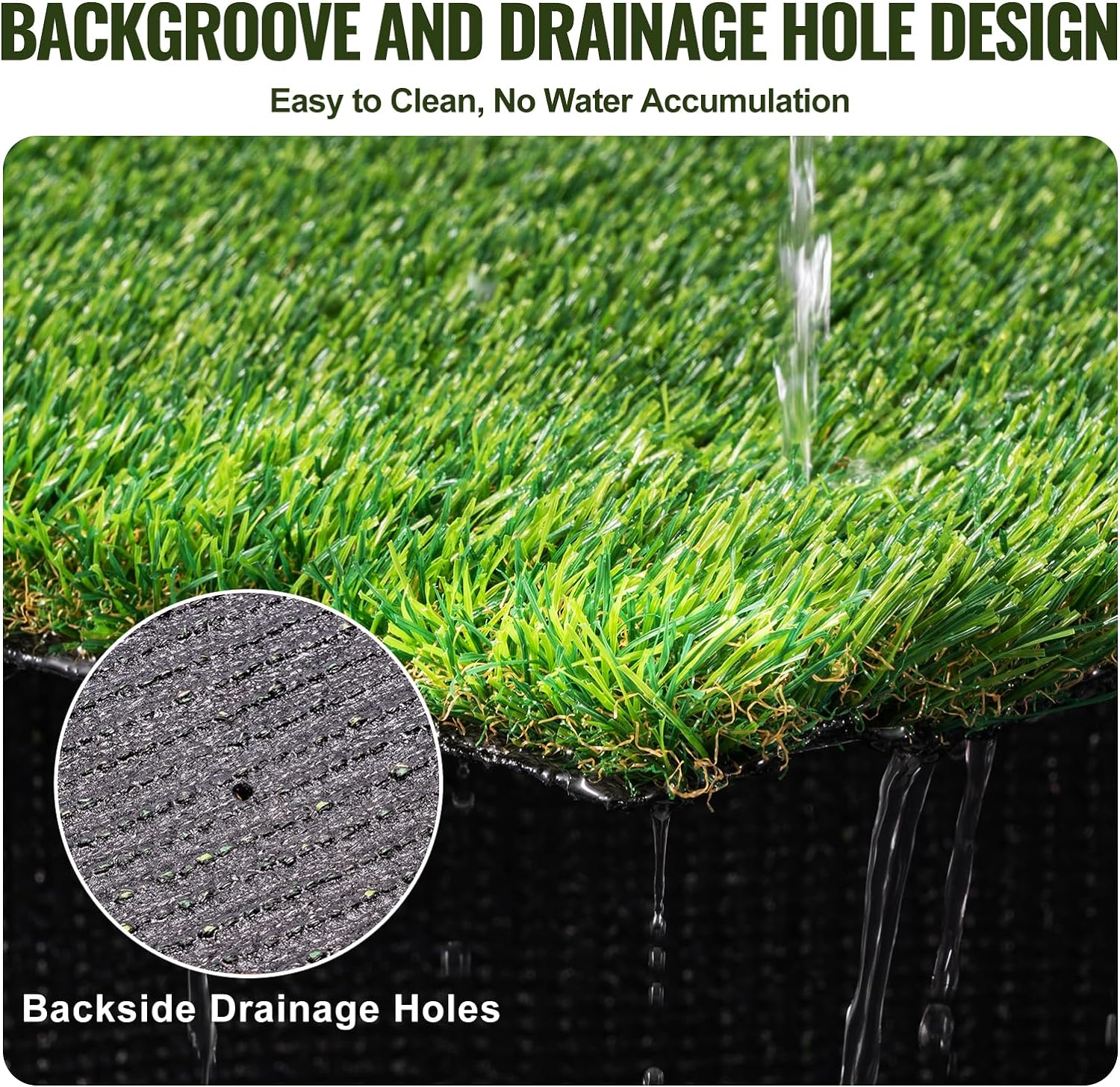
- Can artificial grass get wet?
- Yes, artificial grass can get wet. It is designed to drain water efficiently, and most types of artificial grass have small perforations or holes that allow water to pass through. This drainage system prevents the grass from becoming waterlogged and helps it dry relatively quickly after rain or irrigation. However, it’s important to ensure that the base underneath the artificial grass is adequately prepared for proper drainage.
- Can artificial grass catch fire?
- Artificial grass is generally not highly flammable, but it can melt or be damaged by intense heat. Most high-quality artificial grass products are manufactured with fire-resistant materials. However, if exposed to an open flame or very high temperatures (such as from a barbecue grill or fireworks), artificial grass can melt or deform. It’s essential to exercise caution and avoid exposing artificial grass to direct flames or extreme heat sources.
- Can artificial grass melt?
- Yes, artificial grass can melt under high heat conditions. The melting point of artificial grass varies depending on the materials used in its manufacture, but it is generally around 175-200 degrees Celsius (347-392 degrees Fahrenheit). Exposure to very hot objects or materials, such as reflective surfaces like windows, can cause artificial grass to melt and lose its shape. To prevent melting, avoid placing hot objects directly on the grass and be cautious with reflective surfaces.
- Can artificial grass cause cancer?
- High-quality artificial grass made from safe materials is not known to cause cancer. The concern about artificial grass and cancer primarily revolves around the use of crumb rubber infill, which is sometimes used in sports fields. Crumb rubber is made from recycled tires and may contain trace amounts of potentially harmful chemicals. There have been concerns about exposure to these chemicals when inhaling or ingesting dust or particles from crumb rubber. However, these concerns are primarily related to sports fields rather than residential artificial grass installations. To address concerns, you can choose artificial grass products without crumb rubber infill or inquire about the materials used in the grass you are considering.
- Can artificial grass be laid on dirt?
- Artificial grass can be installed on a variety of surfaces, including dirt, as long as the base is properly prepared. The key to a successful installation on dirt is to create a stable and well-draining base. This typically involves removing any existing vegetation and debris, compacting the soil, adding a weed barrier fabric, and then adding a layer of crushed rock or sand for drainage and stability. The artificial grass is then installed on top of this prepared base.
- Can artificial grass be vacuumed?
- Yes, artificial grass can be vacuumed to remove debris, leaves, and other loose particles. However, it’s essential to use a vacuum cleaner with a soft brush attachment or a specialized artificial grass vacuum cleaner to avoid damaging the grass fibers. Alternatively, you can use a leaf blower or a stiff-bristle broom to sweep away debris from the surface of the artificial grass. Regular maintenance, including vacuuming or sweeping, helps keep the grass looking clean and well-maintained.

- How is artificial grass installed?
- Artificial grass installation typically involves the following steps:
- Site Preparation: Clear the area of any existing vegetation and debris. Ensure proper drainage by grading the surface away from structures.
- Base Preparation: Compact the soil and add a layer of crushed rock or sand for drainage and stability. This base layer is leveled and compacted.
- Weed Barrier: Install a weed barrier fabric over the prepared base to prevent weed growth.
- Artificial Grass Installation: Roll out the artificial grass and trim it to fit the area. Secure the edges with landscape staples.
- Seaming: If necessary, join multiple pieces of artificial grass using adhesive and seam tape.
- Infill Material: Some artificial grass requires infill material (such as silica sand or rubber) to provide stability and cushioning. Spread and evenly distribute the infill material.
- Brush and Compact: Brush the grass fibers upright and use a mechanical compactor to ensure proper compaction of the infill.
- Final Trimming: Trim any excess material and make sure the edges are neat.
- Optional: Adding Accessories: Install any desired accessories, like bordering materials or drainage systems.
- Clean and Maintain: Clean the artificial grass surface and maintain it regularly.
- How is artificial grass made?
- Artificial grass is typically made using the following components:
- Backing Material: A flexible backing material, often made of polyurethane or latex.
- Grass Fibers: Synthetic grass fibers are typically made from materials like polyethylene or polypropylene. They are designed to mimic the appearance and feel of natural grass.
- Infill Material (optional): Some artificial grass products include infill materials like sand or rubber to provide stability and cushioning.
- Backing Coating: The backing material is coated with adhesive to secure the grass fibers.
- The manufacturing process involves extruding the grass fibers, tufting them into the backing material, applying adhesive, and adding any necessary infill materials.
- Artificial grass is typically made using the following components:
- How is artificial turf installed?
- The installation of artificial turf is similar to artificial grass and follows the same general steps outlined above. The main difference between the two lies in the materials used. Artificial turf is typically used for sports fields and may have different specifications and requirements compared to residential artificial grass installations.
- How is artificial turf made?
- Artificial turf is made using a similar process to artificial grass but with specific considerations for sports and performance. It includes a base layer, drainage systems, and specialized grass fibers designed to meet the requirements of sports like soccer, football, and golf. The manufacturing process ensures durability, safety, and performance.
- How much does artificial grass cost?
- The cost of artificial grass varies based on factors such as quality, type, installation complexity, and location. On average, residential artificial grass can cost between $5 to $20 per square foot, including materials and installation. High-quality products and professional installation tend to be more expensive. It’s advisable to obtain quotes from reputable installers and compare different artificial grass options to find the best fit for your budget and needs.
- How to lay artificial grass?
- Laying artificial grass involves preparing the surface, securing the grass, and ensuring proper drainage and stability. The steps are as mentioned in the first question’s answer. Proper installation is crucial for a long-lasting and attractive artificial grass surface. If you’re not experienced with this type of work, it’s recommended to hire a professional installer to ensure a quality installation.
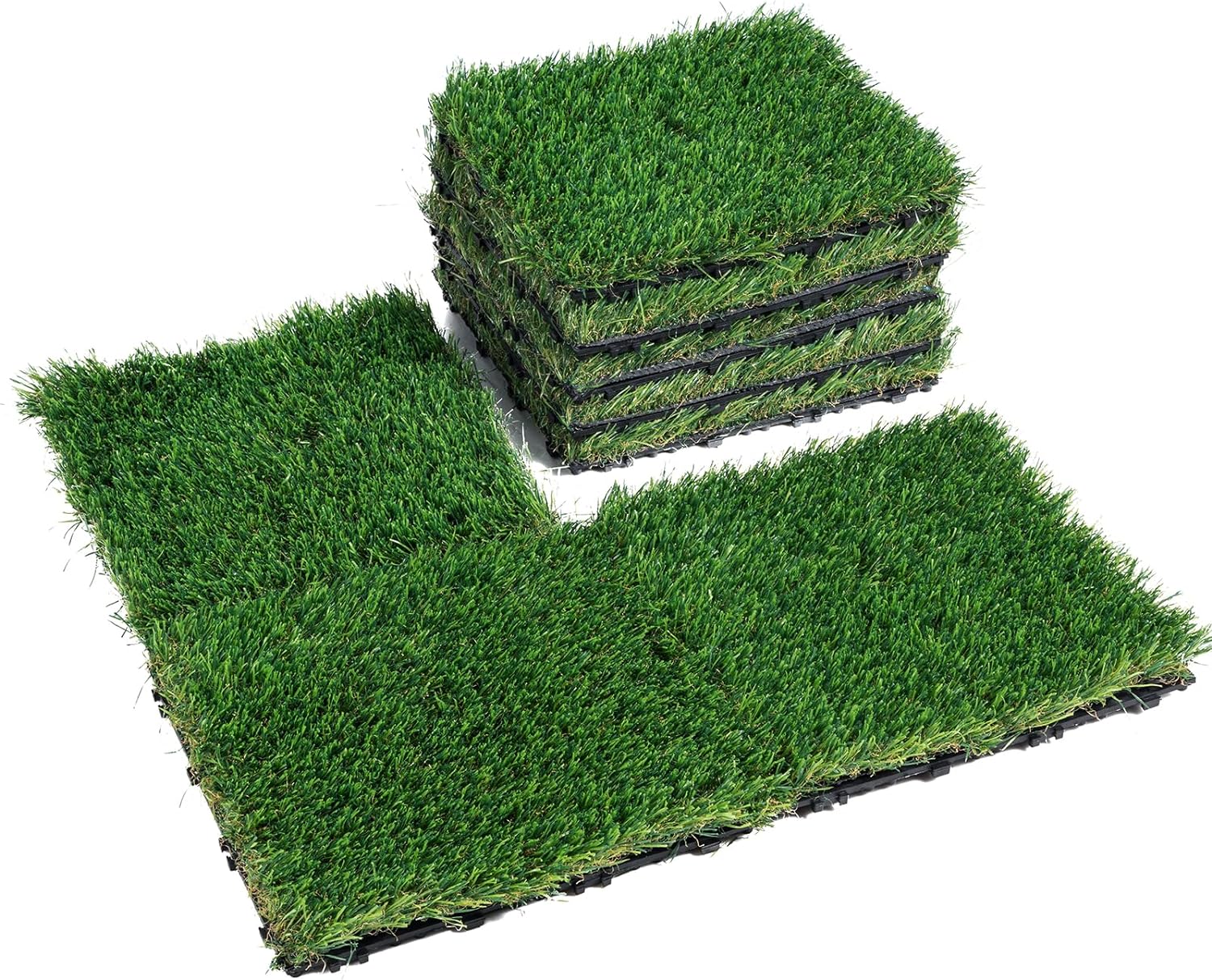
- What artificial grass is best?
- The “best” artificial grass varies based on factors like your budget, location, and intended use. To determine what’s best for you, consider factors such as quality, durability, appearance, maintenance requirements, and your specific application. It’s recommended to consult with a reputable supplier or installer who can recommend suitable options based on your needs.
- What artificial grass is best for dogs?
- The best artificial grass for dogs should be durable, easy to clean, and comfortable for your pets. Look for synthetic grass products designed specifically for pet use, as they often have better drainage systems and are resistant to odors. Additionally, choose a product that is non-toxic and safe for pets.
- What artificial grass looks the most realistic?
- Realism in artificial grass is often achieved through the quality of the grass fibers and the variety of colors and textures. Polyethylene and polypropylene grass fibers tend to look more realistic. To find the most realistic artificial grass, consider the density of the fibers, the color variations, and the way they reflect light. Samples and professional advice can help you make an informed choice.
- What artificial grass is best for putting green?
- For a putting green, you’ll want artificial grass with a short pile height (the length of the grass fibers) and a high stitch count (more fibers per square inch). This combination provides a smoother and more consistent surface for putting. Consult with a golf turf specialist to choose the best artificial grass for your putting green based on your specific requirements.
- What artificial grass looks the most real?
- The realism of artificial grass can vary, but products that mimic the appearance of natural grass effectively often feature a blend of grass fibers in different shades of green, as well as realistic textures. High-quality artificial grass with a dense, multi-fiber construction can provide a more authentic look. Always request samples to see and feel the grass before making a decision.
- What artificial grass should I buy?
- The artificial grass you should buy depends on your specific needs and preferences. Here are some steps to help you make an informed decision:
- Research reputable suppliers and installers in your area.
- Consider your budget and the intended use of the artificial grass.
- Request samples of different grass products to compare their look and feel.
- Discuss your requirements and concerns with the supplier or installer to receive personalized recommendations.
- Ask about warranties and maintenance requirements to ensure you make the best choice for your situation.
- Obtain quotes and compare prices to find a product and installation package that fits your budget.
- The artificial grass you should buy depends on your specific needs and preferences. Here are some steps to help you make an informed decision:
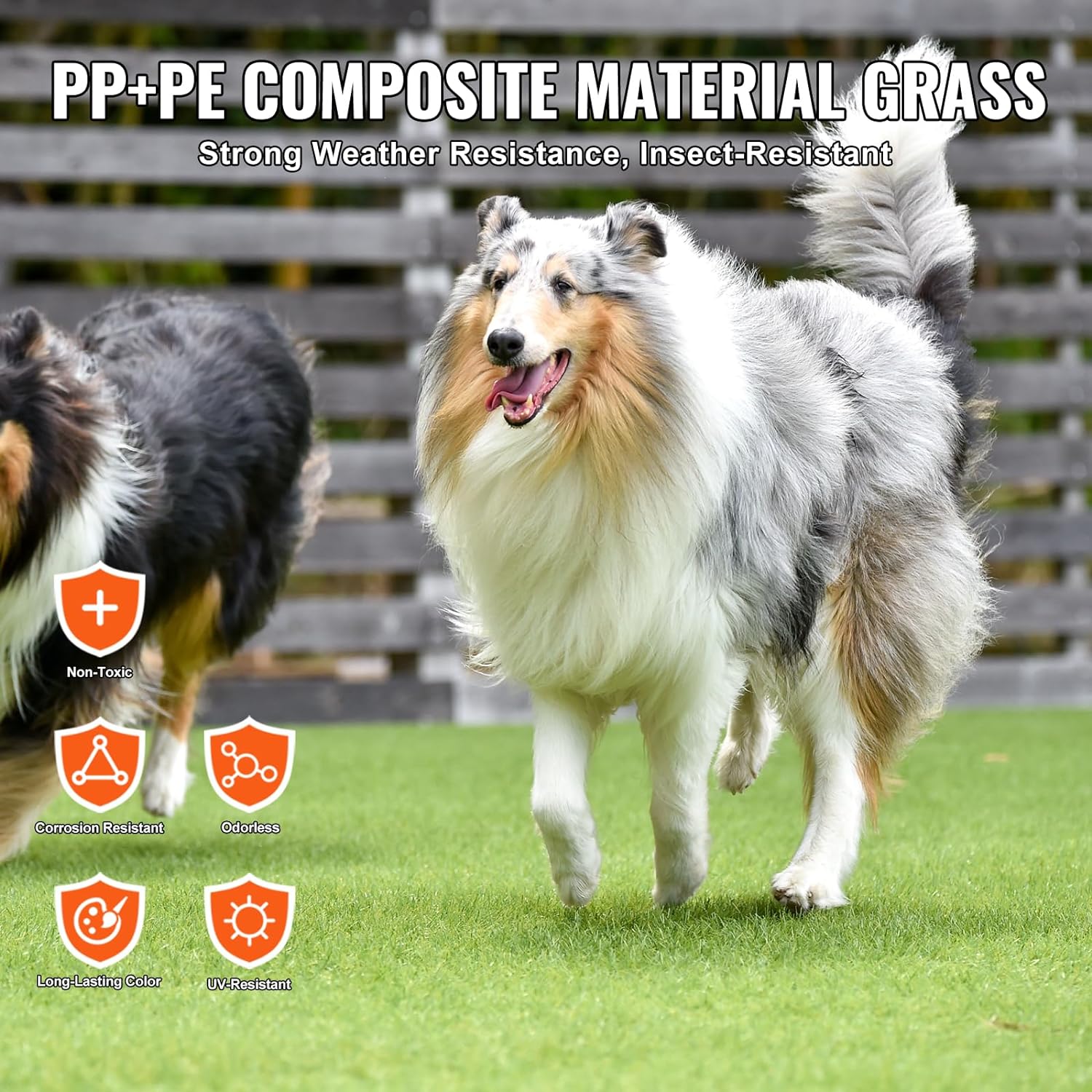
- When laying artificial grass on soil?
- You can lay artificial grass on the soil when the soil has been properly prepared for installation. This preparation typically involves clearing the area of vegetation and debris, compacting the soil to ensure a stable base, adding a weed barrier fabric, and creating proper drainage by adding a layer of crushed rock or sand. Once these preparations are complete, you can proceed with laying the artificial grass.
- When to install artificial grass?
- You can install artificial grass at any time of the year, as long as weather conditions are suitable for the installation process. Many homeowners choose to install artificial grass in the spring or summer when the weather is more predictable and outdoor activities are more common. However, artificial grass can also be installed in the fall or even winter, provided that the ground is not frozen and the installation can proceed smoothly.
- When can you lay artificial grass?
- You can lay artificial grass when you have all the necessary materials and the ground conditions are suitable. Ensure that the soil is not overly wet or frozen, as this can affect the installation process and the final result. It’s best to plan the installation during a period of relatively dry weather to ensure proper drainage and bonding of the grass.
- Should artificial grass be banned?
- Whether or not artificial grass should be banned depends on the context and location. Artificial grass offers several benefits, such as water conservation, reduced maintenance, and year-round usability. However, there are environmental concerns associated with its production and disposal, as well as concerns about heat retention in urban areas. Local governments and organizations may consider regulations or restrictions on artificial grass based on these factors. It’s a topic that can vary by region and should be considered in the context of local environmental conditions and policies.
- How long does artificial grass last?
- The lifespan of artificial grass varies depending on factors such as quality, usage, and maintenance. High-quality artificial grass can last anywhere from 15 to 25 years or even longer with proper care. Regular maintenance, including cleaning, brushing, and occasional re-infilling, can help extend its lifespan. It’s essential to choose a reputable product and follow the manufacturer’s recommendations for maintenance to ensure longevity.

- Where to put artificial grass?
- Artificial grass can be installed in various locations, including:
- Residential lawns and gardens
- Commercial landscapes and courtyards
- Rooftop gardens and terraces
- Playgrounds and sports fields
- Putting greens and golf courses
- Balconies and patios
- Pool areas and decks
- Pet areas and dog runs
- Trade show and event spaces
- The suitability of artificial grass for a specific location depends on your needs and how you plan to use the area.
- Artificial grass can be installed in various locations, including:
- Where can I buy artificial grass?
- You can purchase artificial grass from a variety of sources, including:
- Local home improvement stores and garden centers
- Online retailers and e-commerce platforms
- Specialty artificial grass suppliers and dealers
- Professional landscaping and turf installation companies
- Wholesale distributors
- It’s important to research and compare different suppliers, check product quality, and read customer reviews before making a purchase. Many suppliers offer samples, which can help you assess the look and feel of the artificial grass before buying.
- You can purchase artificial grass from a variety of sources, including:
- Where is artificial grass made?
- Artificial grass is manufactured in various locations worldwide, depending on the brand and supplier. Some major production centers for artificial grass include countries like China, the United States, the Netherlands, Belgium, and the United Kingdom. The choice of manufacturing location often depends on factors such as production cost, quality control, and proximity to markets. When purchasing artificial grass, you can inquire about the origin and manufacturing standards of the product to ensure it meets your requirements.

- Which artificial grass is best for a balcony?
- The best artificial grass for a balcony depends on your specific preferences and needs. For balconies, you’ll generally want a shorter pile height, as space is limited, and shorter grass provides a neater appearance. Look for artificial grass products designed for low-traffic areas, as balconies typically don’t receive as much foot traffic as outdoor lawns. Consider the color and texture that best complements your balcony decor for a natural and appealing look.
- Which artificial grass is best for outdoor?
- The best artificial grass for outdoor use depends on your intended application. For outdoor spaces, such as lawns, gardens, and play areas, consider a product designed for durability, UV resistance, and good drainage. High-quality polyethylene or polypropylene grass fibers are often recommended for outdoor installations. It’s essential to select a product that suits your specific climate and usage requirements.
- Which artificial grass is the most realistic?
- Realism in artificial grass depends on factors like the quality of materials, color variation, texture, and how the grass reflects light. Products that closely mimic natural grass often have a combination of different green shades and blade shapes. To find the most realistic artificial grass, it’s best to request samples from reputable suppliers and assess their appearance and feel in person.
- Which artificial grass is best?
- The best artificial grass varies based on individual needs and preferences. Consider factors such as the intended use, budget, climate, and desired aesthetics when choosing the best artificial grass for your project. High-quality products from reputable suppliers often offer better durability and a more realistic appearance. Consult with professionals or seek recommendations from trusted sources to find the best fit for your specific requirements.

- Why artificial grass?
- Artificial grass is chosen for various reasons, including:
- Low Maintenance: It requires minimal upkeep compared to natural grass, saving time and effort on mowing, watering, and fertilizing.
- Water Conservation: Artificial grass doesn’t need regular watering, making it an eco-friendly choice in regions with water scarcity or drought restrictions.
- Durability: It withstands heavy use and remains green year-round, making it suitable for high-traffic areas.
- Aesthetics: It provides a lush and well-manicured appearance without the hassles of natural grass.
- Allergy-Friendly: It’s a good option for individuals with grass allergies.
- Artificial grass is chosen for various reasons, including:
- Why artificial grass is good for the environment?
- Artificial grass can have environmental benefits, such as:
- Water Conservation: It reduces water consumption by eliminating the need for regular irrigation, helping conserve a precious resource.
- Reduced Chemical Use: It eliminates the need for pesticides and fertilizers, reducing chemical runoff into waterways.
- Lower Carbon Footprint: Artificial grass requires less maintenance equipment (mowers, trimmers) and reduces greenhouse gas emissions associated with lawn care.
- Preservation of Natural Habitats: By reducing the demand for natural grass lawns, artificial grass can help preserve natural habitats.
- Artificial grass can have environmental benefits, such as:
- Why artificial grass is good?
- Artificial grass is considered good for various reasons, including:
- Low Maintenance: It requires minimal upkeep, saving time and money on lawn care.
- Aesthetic Appeal: It provides a consistently green and well-manicured appearance.
- Durability: It can withstand heavy use, making it suitable for both residential and commercial applications.
- Pet-Friendly: Many artificial grass products are designed to be pet-friendly, resistant to odors, and easy to clean.
- Allergy-Friendly: It’s a good choice for individuals with grass allergies.
- Artificial grass is considered good for various reasons, including:
- Why artificial grass is bad for the environment?
- While artificial grass has benefits, it also has potential negative environmental impacts, including:
- Production Materials: The manufacturing of artificial grass involves petroleum-based materials and energy consumption.
- Disposal: At the end of its life cycle, artificial grass can be challenging to dispose of sustainably.
- Heat Island Effect: Artificial grass can contribute to urban heat islands by retaining heat and increasing local temperatures.
- Limited Biodiversity: It lacks the biodiversity and ecosystem benefits that natural grass provides.
- Potential Toxicity: Some older or low-quality artificial grass products may contain harmful substances.
- It’s essential to consider these factors and choose high-quality, eco-friendly products if you decide to install artificial grass to minimize its negative environmental impact.
- While artificial grass has benefits, it also has potential negative environmental impacts, including:
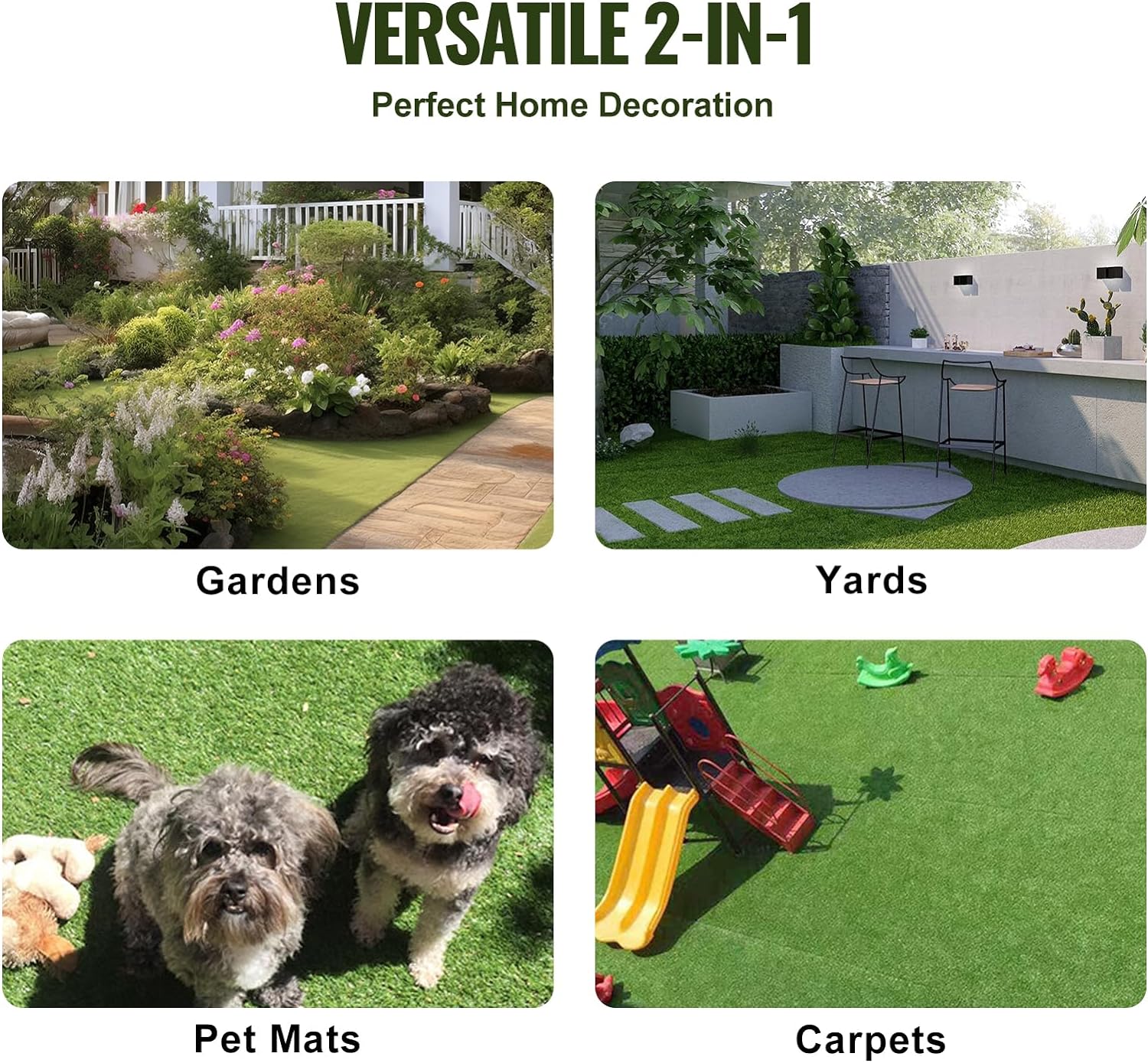
- Does artificial grass get hot?
- Artificial grass can become hot when exposed to direct sunlight, especially during hot weather. The surface temperature of artificial grass can be higher than that of natural grass, making it uncomfortable for bare feet or pets. To mitigate heat concerns, you can choose lighter-colored artificial grass, install shade structures, or wet the grass to cool it down.
- Will artificial grass fade?
- High-quality artificial grass is typically UV-resistant and designed to withstand prolonged sun exposure without significant fading. However, over many years, exposure to harsh sunlight and other environmental factors can cause some degree of fading. Quality and the manufacturer’s warranty play a significant role in determining how well the artificial grass resists fading.
- Will artificial grass rot my decking?
- Artificial grass is generally safe for most types of decking materials. However, it’s essential to ensure proper drainage beneath the artificial grass to prevent moisture accumulation, which can potentially lead to rot in some types of decking. Adequate preparation, including the use of a weed barrier and a well-draining base, is crucial to protect the decking.
- Will artificial grass hurt dogs?
- Artificial grass is generally safe for dogs and is often chosen by pet owners for its durability and ease of maintenance. However, there are some considerations:
- The grass surface can get hot in direct sunlight, potentially causing discomfort to dogs’ paws. It’s advisable to provide shaded areas or wet the grass on hot days.
- Ensure that the artificial grass you choose is non-toxic and safe for pets, as some older or low-quality products may contain harmful substances.
- Regularly clean and remove pet waste to maintain a clean and odor-free surface for your dogs.
- Artificial grass is generally safe for dogs and is often chosen by pet owners for its durability and ease of maintenance. However, there are some considerations:
- Will artificial grass stop weeds?
- Artificial grass can help reduce weed growth compared to natural grass, but it may not completely eliminate weeds. Installing a weed barrier fabric beneath the artificial grass can further inhibit weed growth. However, weeds can still emerge along the edges or through seams and joints if not properly sealed. Regular maintenance, such as inspecting for weeds and removing them as they appear, is necessary to keep the area weed-free.
Conclusion:
Artificial grass has revolutionized the world of landscaping, offering a sustainable, low-maintenance, and visually appealing alternative to natural grass. Whether you’re a homeowner looking for a pristine lawn or a business owner aiming to create an inviting outdoor space, artificial grass is a versatile solution that checks all the boxes.
Enhance your outdoor living experience, conserve water, and enjoy a lush green landscape year-round with artificial grass.
Artificial grass for dogs offers a myriad of benefits, making it an excellent choice for pet owners. With the right installation and maintenance, you can enjoy a lush, pet-friendly lawn that both you and your furry friend will adore. Say goodbye to muddy paws and hello to a cleaner, greener outdoor space for your beloved canine companion.
FAQs:
1. Is artificial grass suitable for all climates?
Yes, artificial grass is designed to withstand a wide range of climates, from hot and dry to cold and wet. It remains green and vibrant regardless of the weather.
2. Can I install artificial grass over my existing lawn?
In most cases, yes. However, proper site preparation is crucial to ensure a level and stable base for the artificial grass.
3. How long does artificial grass typically last?
High-quality artificial grass can last up to 15-20 years or even longer with proper maintenance.
4. Is artificial grass safe for pets?
Absolutely. Many artificial grass products are designed with pets in mind and are easy to clean, making them a great choice for pet owners.
5. Will artificial grass fade over time?
Most high-quality artificial grass products are UV-resistant and are designed to maintain their color and appearance over the years.
6. Is artificial grass safe for dogs?
Yes, artificial grass designed for dogs is safe and non-toxic.
7. Can I use artificial grass for potty training my puppy?
Yes, many pet owners use artificial grass as a convenient potty training solution.
8. Will my dog try to dig up or chew on artificial grass?
Most dogs adapt well to artificial grass and don’t attempt to dig it up or chew on it.
9. How long does artificial grass for dogs last?
With proper care, high-quality artificial grass can last 15 years or more.
10. Can I install artificial grass over concrete for my dog?
Yes, you can install artificial grass over concrete, providing a safe and comfortable surface for your dog.






